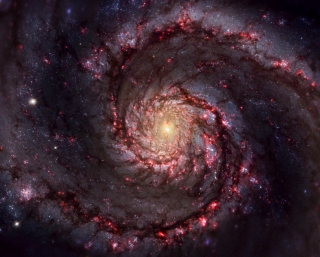How galaxies take in matter and give off energetic radiation
 Washington, August 30 : A distant galaxy could help elucidate two unanswered fundamental questions of galaxy formation, including how they take in matter and how they give off energetic radiation.
Washington, August 30 : A distant galaxy could help elucidate two unanswered fundamental questions of galaxy formation, including how they take in matter and how they give off energetic radiation.
Michael Rauch from the Carnegie Observatories and his team discovered a galaxy with an extended patch of light surrounding it, using the Magellan Telescopes at Las Campanas Observatory and archival images from the Hubble Space Telescope.
The object's appearance means that roughly half of the galaxy's radiation must be escaping and exciting hydrogen atoms outside of its halo.
The key to the escape of radiation can be found in the unusual, distorted shape of the newly observed galaxy. It appears that the object had recently been hit by another galaxy, creating a hole in its halo, allowing radiation to pass through.
"The loss of radiation during galactic interactions and collisions like the one seen here may be able to account for the re-ionization of the universe", Rauch said.
"This galaxy is a leftover from a population of once-numerous dwarf galaxies. And looking back to a time when the universe was more dense, crashes between galaxies would have been much more common than today."
The new observation also helps scientists better understand the flow of inbound matter, from which a galaxy originally forms. In the present case, the escaping ionizing radiation illuminated a long train of incoming gas, which is feeding new matter into the galaxy.
The study will be published in the Monthly Notices of the Royal Astronomical Society. (ANI)